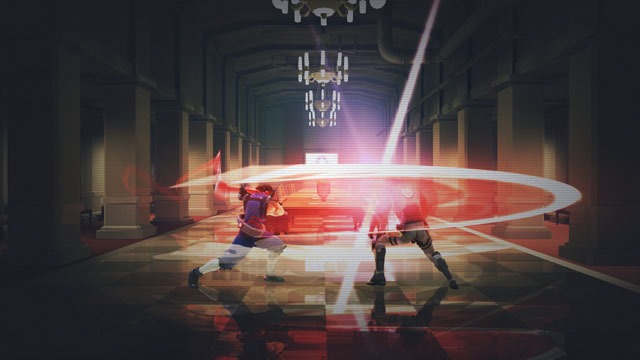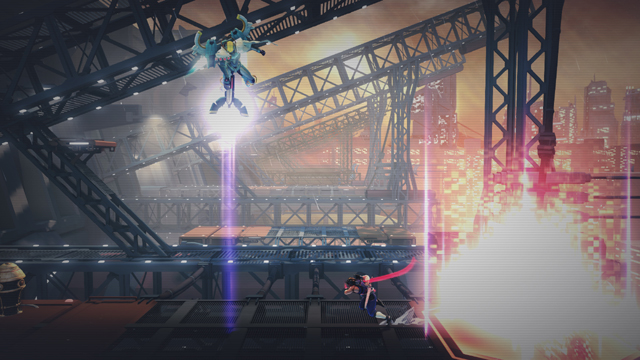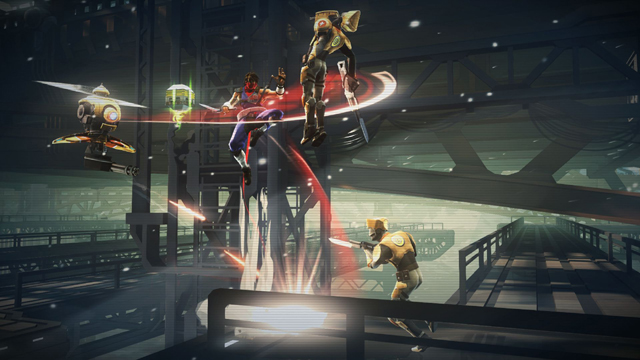Capcom knows just how much its fans love Strider Hiryu. So much so that they’ve decided to partner up with Double Helix Games and Capcom’s developers at its Osaka Studio to craft a brand new video game take on this futuristic ninja.
We got the chance to speak with Capcom Japan’s producer of the game James Vance, who offered up the nitty-gritty on what gamers should expect to see, play and be amazed at once they get their hands on this upcoming PS3/PS4/Xbox 360/Xbox One/PC release. Vance also speaks on the fan adulation for Strider, along with the reasoning behind the decision to bring him back in a brand new game.
Here’s everything you need to know about the 2014 reboot of Strider with all the information provided to use through James Vance.
1. How did the idea for this Strider reboot/remake first come about?

James Vance: While Capcom and Double Helix were working together on a previous project, a discussion of which classic Capcom franchise would Double Helix like to work on naturally came about. Double Helix created several different pitches based on different classic Capcom games, but after some discussion, it quickly became evident that Strider was the one both Capcom and Double Helix were most passionate about.
2. What are the main plot threadings for this brand new adventure?

James Vance: Strider is a reimagining of the epic confrontation between Special-A Class Strider Hiryu, and world dictator Grand Master Meio, his eclectic henchmen and their army of minions. Hiryu’s mission begins in the sprawling dystopian, Soviet bloc inspired city of Kazakh, but will take him through a variety of interconnected yet extremely diverse locales. Players will visit a twisted research center, hidden underground temple, enormous flying battleship and more before the climactic and surprising confrontation with Grand Master Meio.
3. Which, if any, other video games influenced the overall direction and elements of this reboot/remake?

James Vance: Three main goals have guided the creation of Strider. The first was to create a game that is fast, fluid, dynamic and responsive. The second was to ensure that the visual style of the game adheres to the series very unique “analog-future” design, which generously mixes elements of advanced science-fiction technology with base forms such as steam-pipes, cables, gears, etc. The final goal was to deliver on the character of Strider Hiryu, making certain that he looked, felt and played like fans expect, and newcomers would surely welcome.
Each of these goals, being very unique to the Strider universe, naturally focused our attention on the previous side-scrolling games, as well as the Marvel vs. Capcom (MvC) games, where Hiryu has starred as a guest character. Everyone on the project is a fan of the series, and some Capcom Japan project members worked on past tiles, so from the get go we were able to bring a wealth of knowledge to the table. However, a great deal of research and painstakingly detailed design were undertaken on top of this to further ensure that Strider delivers quintessential series experience.
4. What are some of the newer game mechanics that will be featured?

James Vance: One of the key elements in bringing Strider to the modern era was to deliver a deeper and more engaging experience, while maintaining the quick and response action of the previous games. Moving from a compartmentalized stage-clear style design, to a sprawling, interconnected, exploration focused map proved to be the answer.
The expansive game world provides an opportunity to take the core cypher sword gameplay, and utilize it in a much wider variety of action, traversal and exploration challenges and experiences for the player. The expanded gameplay, in turn, opens the door for a vast array of weapons, items and power-ups, which serve as the keys to defeating enemies and unlocking new areas of the map. One of the prime examples of this is Hiryu’s plasma cypher, which can be augmented with various types of plasma, such as explosive, ultra-cold, magnetic or reflect. Ultra-cold, for example, allows Hiryu to freeze enemies in place, creating a strategic window to focus attacks on another opponent. Frozen enemies can also serve as platforms to reach new heights, unlocking previously restricted areas and secrets. This is just one example of the many new and diverse action and exploratory game mechanics players can enjoy.
5. Will there be any nostalgic nods to past games in the Strider series?

James Vance: Yes, of course! Strider is a completely new game, but Strider 1 & Strider 2, as well as Marvel vs. Capcom fans will instantly recognize modern renditions of several iconic locations, bosses and music tracks. There are also a variety of subtle nods hidden in the game architecture, animation and other places for die-hard fans to enjoy.
Head to the next page to hear more about the new Strider from James Vance!
Comments
Strider: Top 10 Facts You Need to Know (Interview with Game Producer, James Vance)